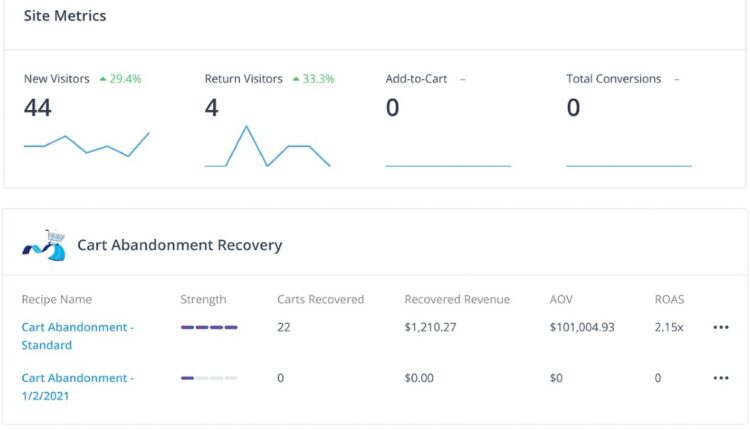E-commerce businesses saw a huge jump in sales during 2020 as quarantined shoppers bought everything from toilet paper and PPE to new furniture for their room renovations online.
The question in 2021, however, is: How do you turn those one-time Covid buyers and browsers into long-term customers?
While it’s expected many of the changes that have evolved over the past year will be permanent—restaurant customers will continue to want curbside pickup, for example—it’s also true that plenty of businesses that benefited from the bump in online shoppers this past year will need to strategize how to keep those customers coming back, once regular in-person shopping is again an easy option.
One company is working on solving exactly this problem for their more than 22,000 e-commerce customers. AdRoll is the champion for direct-to-consumer brands in the e-commerce space and the only e-commerce platform combining data, advertising and marketing tools to help e-commerce businesses pinpoint where their customers are and then reach them with both relevant ads and email. AdRoll has the ability to engage brands’ customers across the entire journey, maximizing customer acquisition and retention. Jason Finkelstein, AdRoll’s CMO, explains their approach.
E-commerce strategy in 2021 must cover every stage of the buyer journey
2020 upended the e-commerce space. The lack of in-store shopping meant mom-and-pop and offline businesses now had to have an online presence to survive, not to mention all the companies that were online now had more competition and noise to sift through for consumer attention.
Consumer attention was also through the roof, with more people online than ever. The surplus of people shopping online with more products to compare and brands to shop from meant more people were browsing vs. purchasing—there could always be something better, something cheaper, something else.
AdRoll tackles this problem from soup to nuts, offering strategies and tools across every stage to bridge the gap between new businesses and new customers.
Understanding the customer journey
Any e-commerce company that wants to succeed must understand the customer journey. First, there’s the browsing stage. In this stage, consumers don’t know what they want. They’re looking around and are open to options. Here, AdRoll gives customers the compelling messages that help grab the eye of the browser.
There are 1.8 billion digital shoppers in the world. AdRoll’s data and machine learning over the past 12+ years means they’ve met over 1.2 billion of them, including over 70% of those in the US. Consequently, AdRoll has an instant head start on knowing its clients’ customers and helping to find them. Using this data, AdRoll creates detailed audiences for clients based on things like browsing behavior and purchasing habits.
After the browsing stage, customers reach the consideration stage. Once audiences are established, AdRoll gives its customers tools for product recommendations to help narrow down what the consumer might be looking for and want to buy.
Then there’s the buying stage. Once customers have explored what the e-commerce business has to offer, AdRoll’s legacy secret sauce comes into play: retargeting.
Retargeting via email and/or ads helps bring AdRoll customers’ products back to the minds of the browsers. Because the company knows so much about how shoppers work, they know the right client products to recommend to the clients’ customers—so the products they’re serving and displaying are the ones consumers want, and the ones driving the most purchases.
The biggest problem for e-commerce: abandoned carts
Abandoned carts are a major problem for all e-commerce businesses. How big of a problem?
These numbers will give you an idea:
$4.6 trillion worth of merchandise is left in carts.
The average cart abandonment rate is 75.6%.
And on mobile phones, that rate jumps to 85.65%.
Cart recovery campaigns, however, can take a huge bite out of these numbers by converting browsers into buyers. AdRoll rolled out its abandoned cart recovery to 100% of its customers, allowing them to create an automated email to drive the user directly back to their cart. This creates a seamless path to purchase for the customer by reducing the burden on the customer to recreate their cart.
And here’s some data on those recovery campaigns and why they’re important:
48% of emails on cart abandonment are opened.
21% of received cart abandonment emails are clicked on.
10.7% of received cart abandonment emails lead to shopping cart recovery.
60% of shoppers returned to make a purchase within 24 hours of receiving personalized emails after abandoning their shopping carts.
So abandoned cart recovery really can make a huge difference for e-commerce businesses looking to convert customers as we move into the post-pandemic world.
E-commerce is only going to continue to grow as 2021 continues—and that means not only more customers, but also more competition. Brands that want to compete, stay relevant, and keep turning browsers into customers will need to step up their advertising and marketing game.


